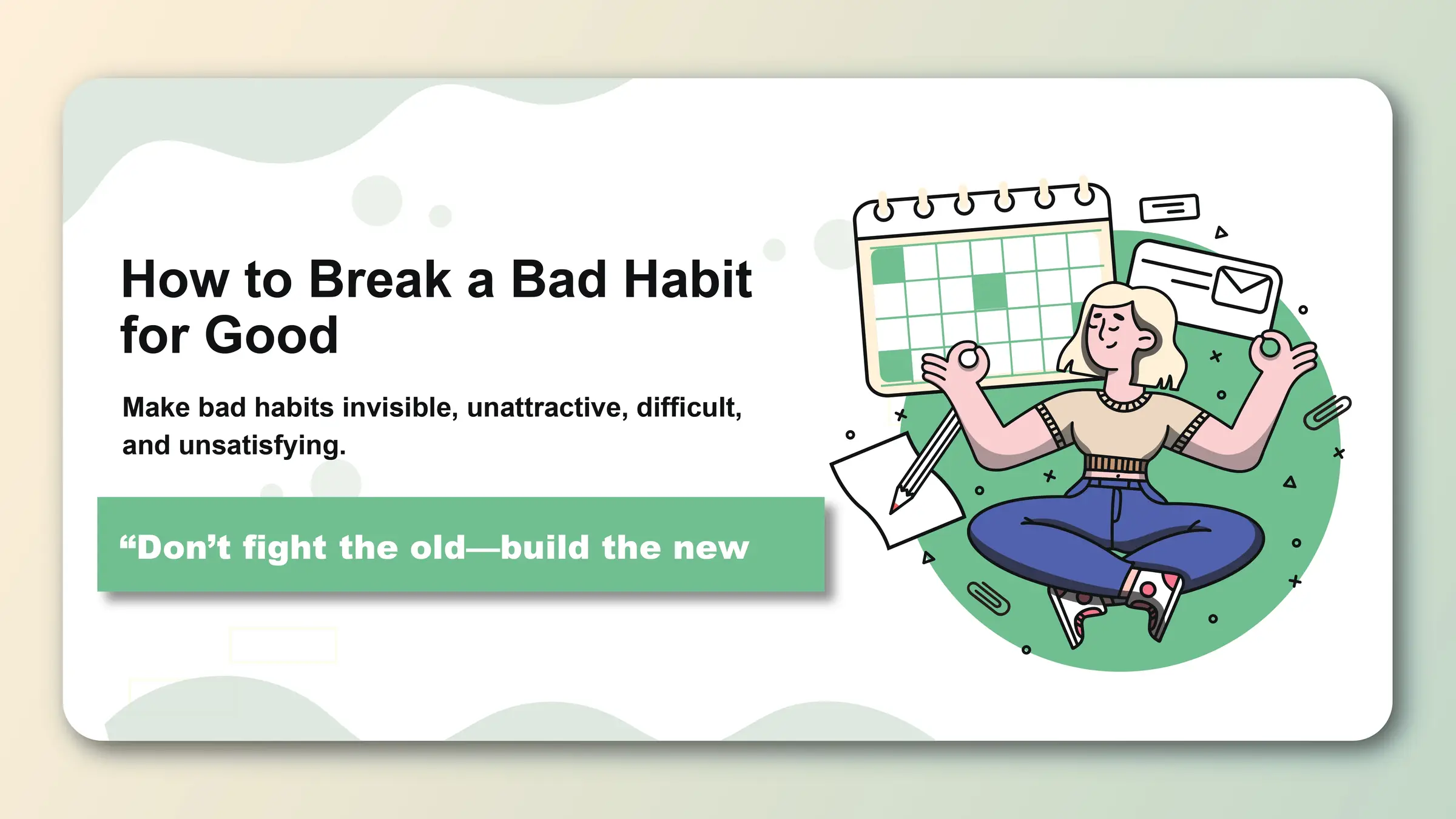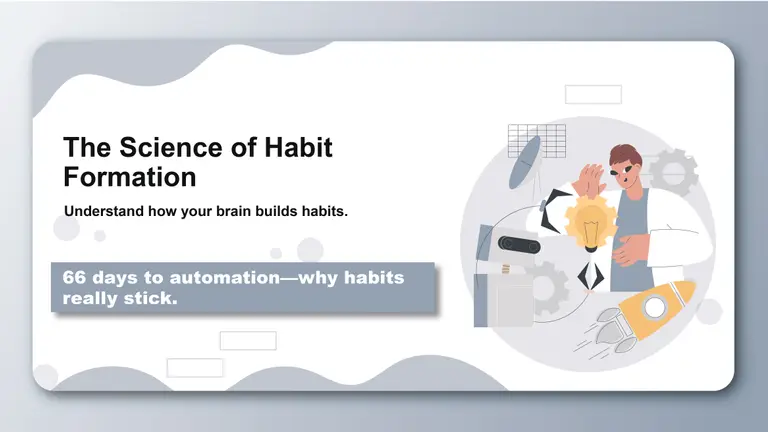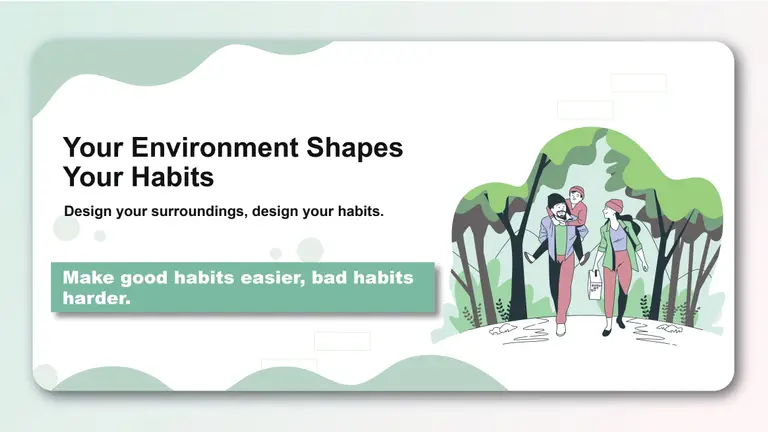How to Break a Bad Habit for Good
We all have bad habits we'd like to break, from biting our nails to procrastinating on important tasks. Often, we rely on willpower to overcome them, but this is rarely a successful long-term strategy. A more effective approach is to understand the mechanics of your bad habits and systematically redesign your environment and routines to make them obsolete.
Step 1: Identify the Cue
Every habit is triggered by a cue. The first step to breaking a bad habit is to become aware of what triggers it. For one week, whenever you perform the bad habit, write down the answers to these questions:
- Who are you with?
- What time is it?
- Where are you?
- What emotion are you feeling?
- What action preceded the urge?
After a week, you should have a clear idea of the cue(s) that trigger your bad habit.
Step 2: Invert the Four Laws of Behavior Change
James Clear's "Four Laws of Behavior Change" for building good habits can be inverted to break bad ones.
1st Law: Make It Invisible
If you don't see the cue, you're less likely to act on the habit.
- Trying to eat less junk food? Don't keep it in the house.
- Wasting too much time on your phone? Put it in another room when you need to focus.
- Watching too much TV? Unplug it after you use it and put the remote in a drawer.
The goal is to reduce your exposure to the triggers of your bad habits.
2nd Law: Make It Unattractive
Bad habits persist because we associate them with some benefit. To make a bad habit unattractive, reframe your mindset and focus on the negative consequences.
- Instead of thinking, "I'm relaxing by smoking a cigarette," think, "I'm damaging my lungs and increasing my risk of cancer."
- Write down all the negative effects of your bad habit and read them regularly.
- Highlight the benefits of avoiding the bad habit. "I will have more energy and save money if I don't smoke."
3rd Law: Make It Difficult
Increase the friction between you and your bad habit. Make it harder to do.
- If you shop online too much: Remove your saved credit card information from websites and apps.
- If you check social media too often: Delete the apps from your phone and only access them through a web browser on your computer.
- If you snooze your alarm: Put your alarm clock on the other side of the room so you have to get out of bed to turn it off.
4th Law: Make It Unsatisfying
Bad habits often have an immediate reward but delayed consequences. To make a bad habit unsatisfying, add an immediate cost.
- Get an accountability partner: Find someone you report to every day. If you perform the bad habit, you have to confess to them.
- Create a "habit contract": This is a formal agreement where you state your intention to quit a bad habit and create a penalty if you fail. For example, for every day you smoke, you have to give a friend $20.
Step 3: Replace It with a Good Habit
It's very difficult to simply eliminate a bad habit. A more effective strategy is to replace it with a good habit that provides a similar benefit.
- If you smoke to relieve stress, replace it with a 5-minute meditation or a walk.
- If you eat junk food when you're bored, replace it with reading a book or calling a friend.
Identify the underlying need your bad habit is fulfilling and find a healthier way to meet that need.
Conclusion
Breaking a bad habit is a process that requires a strategic approach, not just willpower. By identifying your triggers and making your bad habits invisible, unattractive, difficult, and unsatisfying, you can set yourself up for success. Be patient, be kind to yourself when you slip up, and focus on consistent progress.



